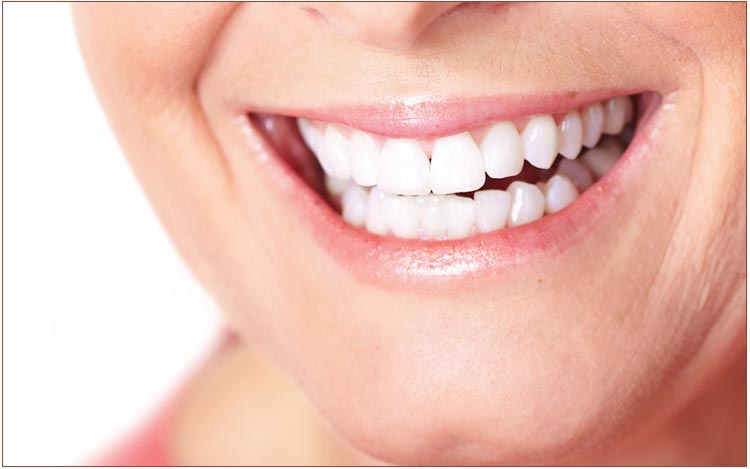Technological advances and affordability give local patients more options in dental care
DIANNE TANNER was wearing dentures at 21. Her family couldn’t afford regular dental visits when she was growing up — and her teeth suffered. By the time she was working and able to afford it, she was ready for false teeth. The “regular dentures” never did work very well, admits the patient care technician for kidney dialysis, who lives in Lakeland.
After wearing dentures for 40 years, her bottom jaw had lost a lot of bone — bone that kept the teeth in place. “My plate would not stay in no matter what I did,” she says.
On the advice of her dentist, Dr. Dwight Pate of Auburndale, she has gone to both upper and lower teeth implants. “I eat better. I feel better. I look better. I can talk and not worry about them sliding around,” Tanner explains. “They’re totally different from anything I ever wore.”
Jim Gary, a retired construction worker from Polk City, also was wearing dentures that didn’t fit him well. “I spit them out when I coughed,” he says. After having his bone built up, he went with zirconia teeth that are more rigid than the typical plastic teeth. They are regarded as permanent, not removable. “They’re great. I don’t have any problem,” Gary adds.
Newer technologies and materials are giving people more options — and second chances to have teeth that stay in their mouths. False teeth are screwed into implants that anchor teeth to the gums, replacing roots.
Dr. Pate, who does general and restorative dentistry, used guided surgery to place Tanner’s implants — just where they’re supposed to be. While the capability of doing guided surgery has been around for nearly a decade, lower costs have now made it a practical solution for a single implant. Drilling with the guide is extremely accurate. “That’s important when you want to stay away from the sinuses and nerve,” he asserts.
“I can create a guide on the computer screen that actually has a receptor for a metal sleeve that literally guides the drill,” explains Dr. Pate, who teaches guided implant surgery to dental residents at University of Florida’s resident dental clinic in Seminole, which is run in partnership with St. Petersburg College. “I’m not drilling freehand.” The guide is made from a simulation of the patient’s anatomy after a computed tomography scan.
Another one of his patients, Gary, didn’t have the guided surgery. He got the newer zirconia teeth that look natural. “The lay person couldn’t tell it’s a fake tooth,” Dr. Pate says.
While prices vary depending on the patients and circumstances, zirconia teeth can cost $25,000 for an upper or lower set of implant-supported teeth, or $50,000 to $60,000 for both. Having the appearance of porcelain, these teeth can be brushed and flossed like natural teeth. They are much stronger than acrylic teeth and are resistant to fractures and stains. Entirely supported by implants in the bone, they “do not put pressure on the gums for support,” Dr. Pate observes. “They are not removable, but rather are fixed in a ‘permanent’ fashion like natural teeth.”
Removable, implant-supported teeth made of acrylic can be considerably cheaper: Approximately $15,000 for a full mouth. They are removed like dentures, but they are locked — or snapped — into place in the mouth.
Acrylic dentures, by comparison, cost approximately $4,000 for an upper-and-lower set.
Dr. Jeff Barnes, a periodontist practicing in Lakeland and Winter Haven, is offering guided surgery more often than ever before. Because of three dimensional scans, computers can map implant placement more accurately. “It’s pretty much revolutionizing placement,” he says. “The work performed through guided surgery can be more accurate and less invasive than in traditional cases. It is safe, predictable, and yields an efficient outcome for the patient,” adds Dr. William Nerestant, a Lakeland dentist who offers implants, cosmetic dentistry, and other services. Newer technologies also are making it possible to regenerate gum and bone, making implants more comfortable and predictable, Dr. Barnes points out.
A zirconia crown has become popular “to improve the appearance of a tooth that has become stained or disfigured over the years,” Dr. Nerestant says. “They are durable, easy to wear, and long lasting. It (zirconia) is a good choice if you are looking for a strong, long-lasting, and visually appealing crown or bridge.”
Taking care of your natural teeth, through proper brushing, flossing, and regular dental visits, is always advisable. “If you let that go, you’ll pay for it later,” cautions Tanner. She has no regrets about the implants, though. “That was the best choice I ever made with my health.”
CREDIT
story by CHERYL ROGERS
Posted February 26, 2016
